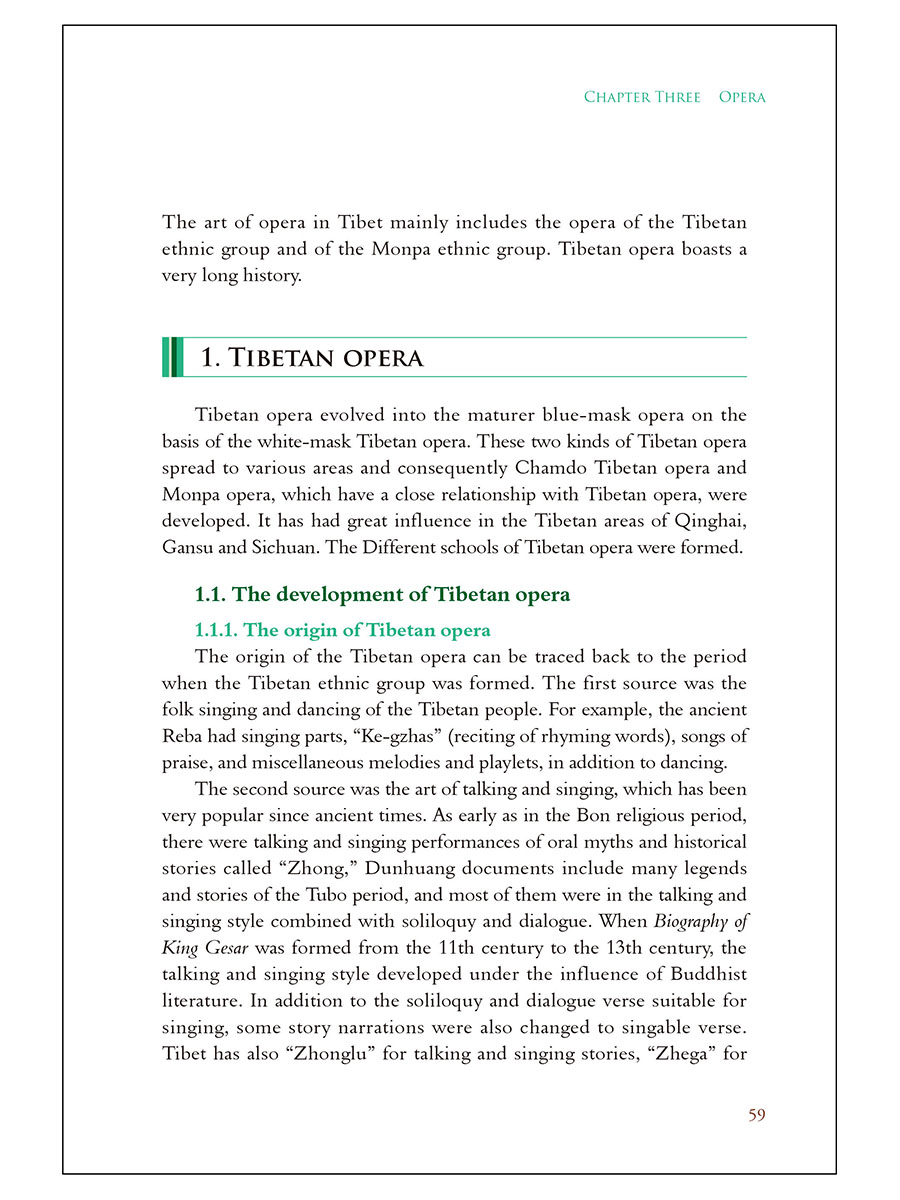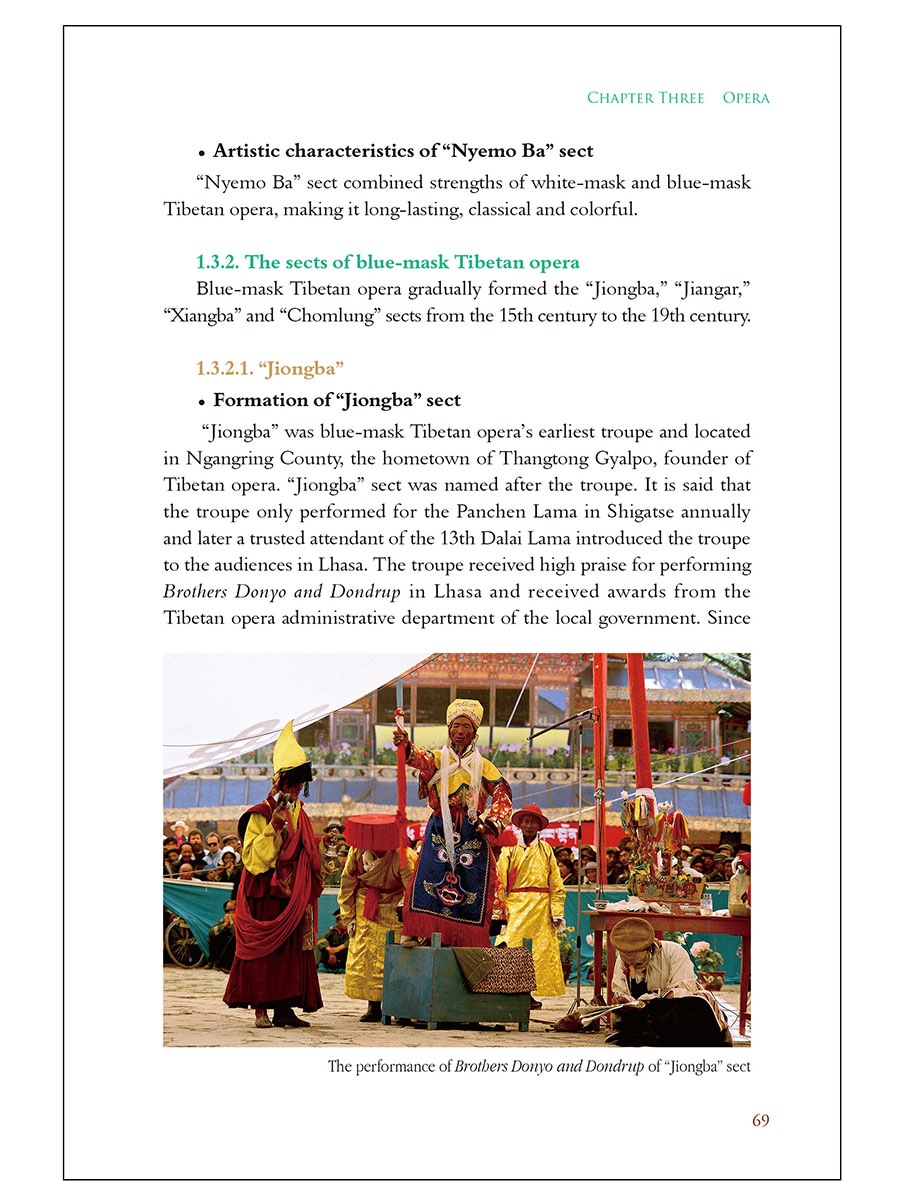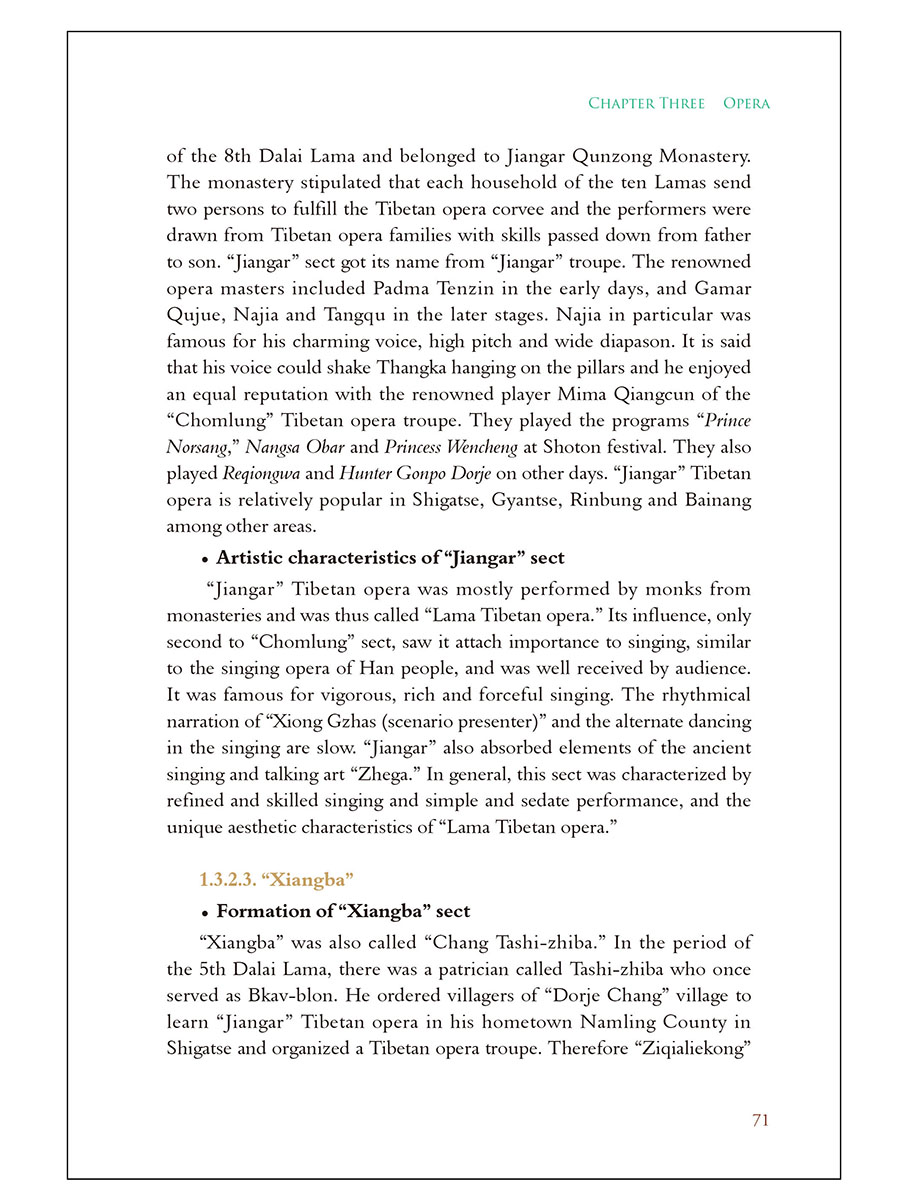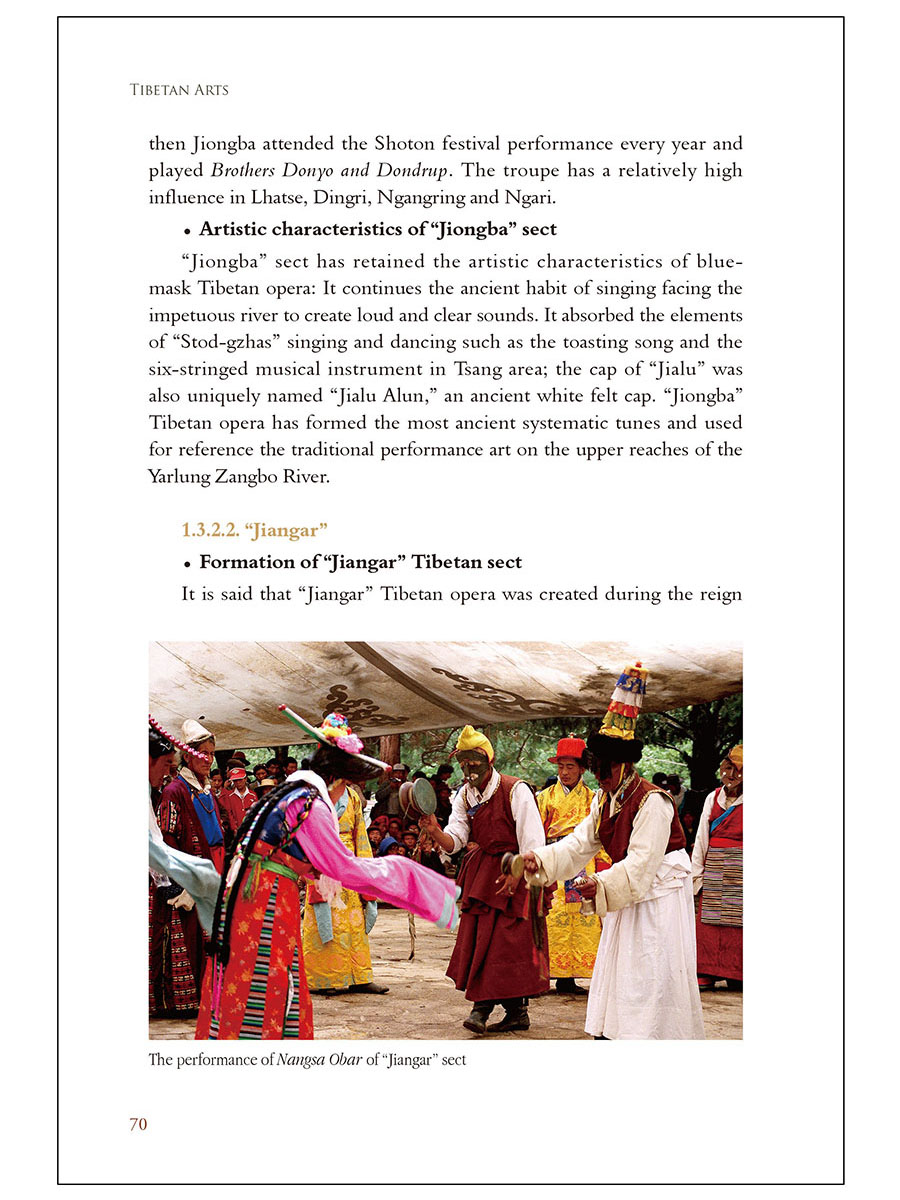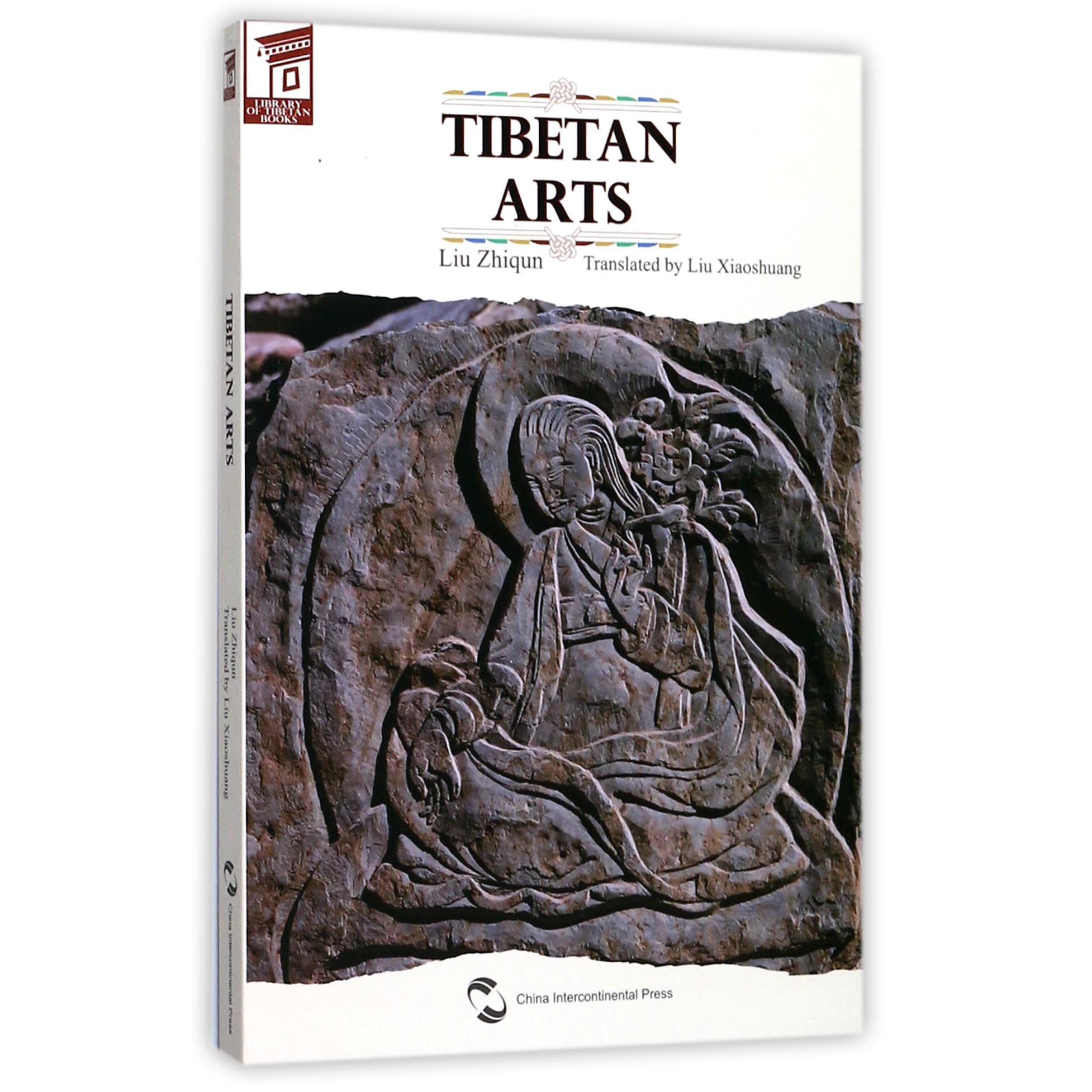
出版社: 五洲传播
原售价: 118.00
折扣价: 71.98
折扣购买: 西藏艺术(英文版)
ISBN: 9787508537795

刘志群,1965年毕业于中央戏剧学院。历任西藏自治区藏剧编剧,西藏歌舞团编剧,西藏戏剧家协会副主席兼秘书长,中国戏曲学会理事。合作改编大型传统藏戏《诺桑法王》,新编大型历史藏戏《唐东杰布》等10余部藏戏剧作。主编并合作撰写《中国戏曲志?西藏卷》等。 Liu Zhiqun, who graduated from the Central Academy of Drama in 1965, has served successively as scriptwriter of Tibetan opera of the Tibet Autonomous Region, scriptwriter of the Tibetan Song and Dance Troupe, vice chairman and secretary general of the Tibetan Dramatist Association and member of the Council of Chinese Opera Society. He participated in the adaptation of the traditional Tibetan opera named Nuosang Dharma King and the adaptation of the Tibetan historical opera named Tangdongjiebu and more than 10 other Tibetan operas. In addition, he is the chief editor and co-author of the Records of Chinese Operas: Tibetan Operas.
About 3,000 years ago, there existed on the Qinghai-Tibetan Plateau various strains of Shamanism, namely “Bon,” such as Tian (Heaven) Bon, Mo (Evil) Bon, and Zan Bon among others. Heaven represented natural forces, evil was the symbol of a mysterious force, and Zan was the god of the world as recorded in Bon religious books. In addition, many subsequent ancient Bon deities, including Dahra, Pakse and Gai Kuo, were all objects of worship in ancient Tibet, with different idolatry, origins and rituals. 西藏地处亚洲腹地,处于东方文化、南亚文化和中西亚文化相接触、撞击的交汇点上。千百年来,生活于这片高天厚土、神奇大地上的西藏人民创造了灿烂的民族艺术。西藏同祖国内地和周边地区在政治、经济和文化上的交往、交流,对西藏艺术和文化的发展产生了重大影响。西藏艺术是西藏本土文化对外来文化兼收并蓄的吸收过程的结晶。 岁月流过,人迹寥寥。无垠旷野巨岩石壁之间散布的岩画,诉说着高原先民的艺术创作,留下无限遐想……在社会发展、时代变迁与历史进步中,西藏艺术不断改变自己,不断探索新艺术形式,去记录对社会变化的反应和思考。 西藏艺术内容丰富,多姿多彩,是青藏高原的标识和徽记,体现了青藏高原民族的生活风情和审美情趣,折射出各族人民的精神风貌,展示了特有的高原风采,是西藏文化宝库的瑰丽明珠,在新的时代呈现出更加多彩的风姿。 本书以八个章节对西藏艺术的各个门类,包括艺术歌舞、宗教乐舞、戏曲艺术、书法艺术、绘画艺术、雕塑艺术等作了精当介绍。本书在特别的艺术语境下,以特有的笔触书写了青藏高原上艺术创造世界的中国故事,展示了西藏艺术形式的发展流变,为世人了解、洞察、探索青藏高原文化艺术开启了又一扇窗口,也触及了各个艺术门类及其代表作品所传递的文化遗产、民族记忆、艺术传承和保护,乃至传统与现代之间矛盾与融合等具有现实意义的问题。 Tibet is located at the innermost part of Asia and the intersection where oriental culture and cultures of the South, Central and West Asia interact and conflict with each other. For thousands of years, Tibetan people living on this grand and mysterious land have created splendid ethnic arts. The communication and exchange between Tibet and the inland areas of China and surrounding areas in politics, economy and culture have greatly influenced the development of the Tibetan art and culture. The Tibetan arts are the consequence of the process of integrating local Tibetan and external cultures. The art on the huge rock presents the art creations by ancestors living on the plateau, leaving infinite space for imagination. In the process of social development and historical evolution, Tibetan arts have been changing to explore and adopt new art forms and record responses to and thoughts on social changes. The Tibetan arts with rich content serve as a logo and symbol of the Qinghai-Tibet Plateau, reflecting life and aesthetic taste of people living on the plateau as well as spirits of the ethnic groups. The arts show unique characteristics of the plateau and have become a prominent part of Tibetan culture. They are even more charming in the new times. The book consists of eight chapters that give an introduction to Tibetan arts, covering art songs and dances, religious music and dances, opera, calligraphy, painting and sculpture art. Under specific art context, it tells stories about art creation on the Qinghai-Tibet Plateau and shows the evolution of Tibetan art forms, opening a window for readers to understand, observe and explore culture and art on the plateau. It also contains content about cultural heritage, ethnic memories and art inheritance and protection related to these arts and the representative works, and even a number of issues with realistic significance concerning conflicts and integration between traditional and modern elements.
